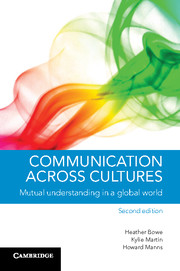36 results
Preconception care in mental health services: planning for a better future
-
- Journal:
- The British Journal of Psychiatry / Volume 216 / Issue 4 / April 2020
- Published online by Cambridge University Press:
- 23 September 2019, pp. 180-181
- Print publication:
- April 2020
-
- Article
-
- You have access
- HTML
- Export citation
Efficacy of Exotic Control Strategies for Restoring Coastal Prairie Grasses
-
- Journal:
- Invasive Plant Science and Management / Volume 7 / Issue 4 / December 2014
- Published online by Cambridge University Press:
- 20 January 2017, pp. 590-598
-
- Article
- Export citation
11 - The new frontier: economic rights of foreign investors versus government policy space for economic development
- from Part IV
-
-
- Book:
- Alternative Visions of the International Law on Foreign Investment
- Published online:
- 05 March 2016
- Print publication:
- 03 March 2016, pp 289-323
-
- Chapter
- Export citation
Contributors
-
-
- Book:
- The Cambridge Dictionary of Philosophy
- Published online:
- 05 August 2015
- Print publication:
- 27 April 2015, pp ix-xxx
-
- Chapter
- Export citation
References
-
- Book:
- Communication across Cultures
- Published online:
- 12 August 2019
- Print publication:
- 23 September 2014, pp 248-275
-
- Chapter
- Export citation
Transcription conventions
-
- Book:
- Communication across Cultures
- Published online:
- 12 August 2019
- Print publication:
- 23 September 2014, pp x-x
-
- Chapter
- Export citation
10 - Intercultural communication in the workplace
- from Part III - Professional communication across cultures
-
- Book:
- Communication across Cultures
- Published online:
- 12 August 2019
- Print publication:
- 23 September 2014, pp 206-226
-
- Chapter
- Export citation
5 - Conversation across cultures
- from Part II - Structure and contextual update across cultures
-
- Book:
- Communication across Cultures
- Published online:
- 12 August 2019
- Print publication:
- 23 September 2014, pp 95-117
-
- Chapter
- Export citation

Communication across Cultures
- Mutual Understanding in a Global World
-
- Published online:
- 12 August 2019
- Print publication:
- 23 September 2014
-
- Textbook
- Export citation
Part I - Contextual felicity across cultures
-
- Book:
- Communication across Cultures
- Published online:
- 12 August 2019
- Print publication:
- 23 September 2014, pp 23-24
-
- Chapter
- Export citation
4 - Speech acts and politeness
- from Part I - Contextual felicity across cultures
-
- Book:
- Communication across Cultures
- Published online:
- 12 August 2019
- Print publication:
- 23 September 2014, pp 71-92
-
- Chapter
- Export citation
1 - Culture, communication and context
-
- Book:
- Communication across Cultures
- Published online:
- 12 August 2019
- Print publication:
- 23 September 2014, pp 1-22
-
- Chapter
- Export citation
Preface and acknowledgements
-
-
- Book:
- Communication across Cultures
- Published online:
- 12 August 2019
- Print publication:
- 23 September 2014, pp xi-xiv
-
- Chapter
- Export citation
9 - Translating language and culture
- from Part III - Professional communication across cultures
-
- Book:
- Communication across Cultures
- Published online:
- 12 August 2019
- Print publication:
- 23 September 2014, pp 187-205
-
- Chapter
- Export citation
Frontmatter
-
- Book:
- Communication across Cultures
- Published online:
- 12 August 2019
- Print publication:
- 23 September 2014, pp i-iv
-
- Chapter
- Export citation
3 - Schemas, face and politeness
- from Part I - Contextual felicity across cultures
-
- Book:
- Communication across Cultures
- Published online:
- 12 August 2019
- Print publication:
- 23 September 2014, pp 48-70
-
- Chapter
- Export citation
11 - Successful intercultural communication
- from Part III - Professional communication across cultures
-
- Book:
- Communication across Cultures
- Published online:
- 12 August 2019
- Print publication:
- 23 September 2014, pp 227-244
-
- Chapter
- Export citation
7 - Positioning the other: naming, address and honorifics
- from Part II - Structure and contextual update across cultures
-
- Book:
- Communication across Cultures
- Published online:
- 12 August 2019
- Print publication:
- 23 September 2014, pp 136-161
-
- Chapter
- Export citation
List of tables and figures
-
- Book:
- Communication across Cultures
- Published online:
- 12 August 2019
- Print publication:
- 23 September 2014, pp ix-ix
-
- Chapter
- Export citation
Contents
-
- Book:
- Communication across Cultures
- Published online:
- 12 August 2019
- Print publication:
- 23 September 2014, pp v-viii
-
- Chapter
- Export citation

